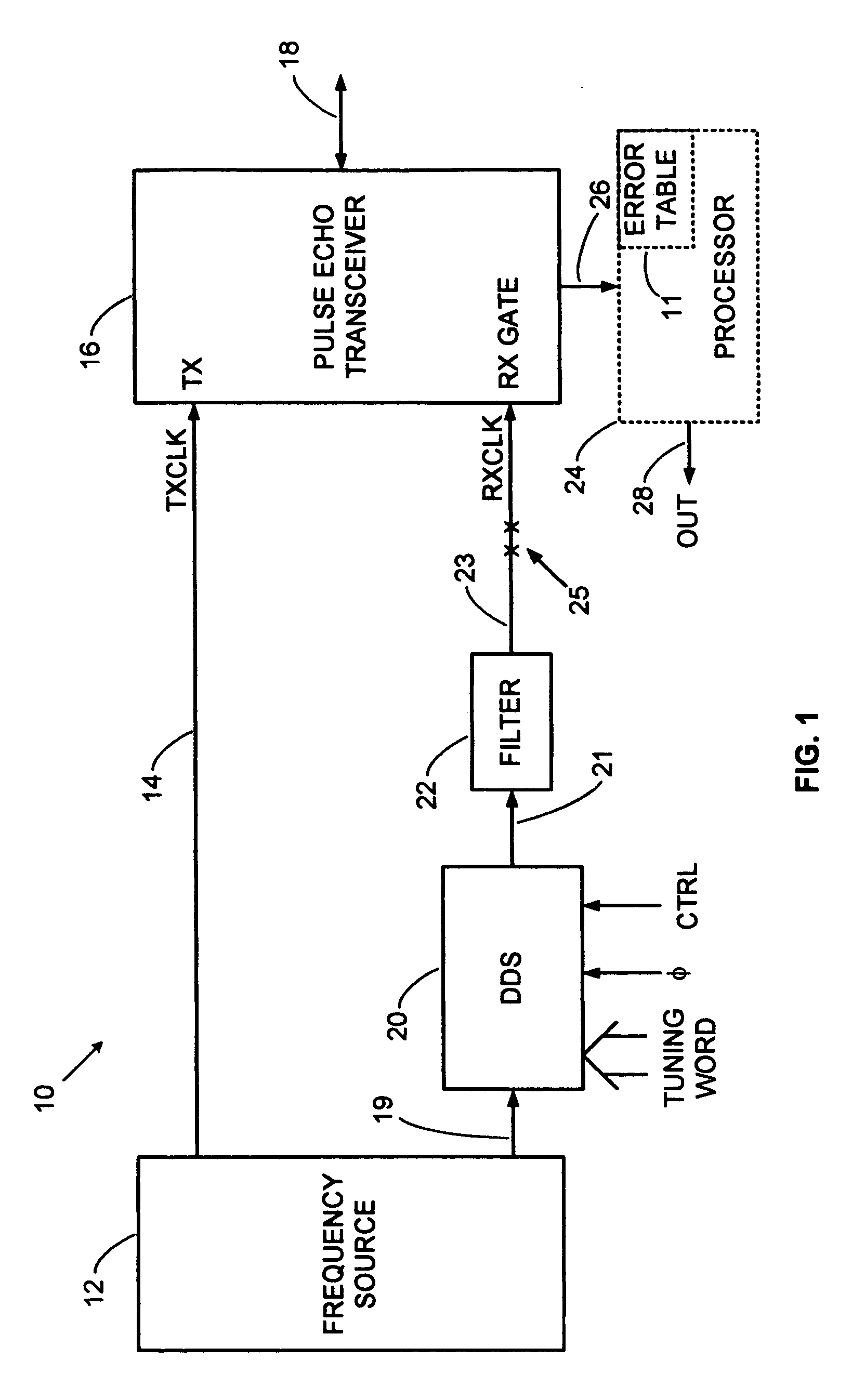Direct digital synthesis radar timing system
a timing system and digital synthesis technology, applied in the field ofradar timing circuits, can solve the problems of high accuracy requirement of precision long-range systems, control short-term phase errors, and pll system cannot meet this requirement, so as to reduce timing system errors, flexible programmability, and high stability
- Summary
- Abstract
- Description
- Claims
- Application Information
AI Technical Summary
Benefits of technology
Problems solved by technology
Method used
Image
Examples
Embodiment Construction
[0026] A detailed description of the present invention is provided below with reference to the figures. While illustrative component values and circuit parameters are given, other embodiments can be constructed with other component values and circuit parameters. All U.S. Patents and copending U.S. applications cited herein are herein incorporated by reference.
General Description
[0027] Direct digital synthesis (DDS) generates frequencies by digitally accumulating phase in a manner that directly emulates the definition of frequency. Frequency ω can be defined by a rate of change in phase φ or 107 =φ / t, where t is time. This can readily be seen from the well-known relation φ=ωt. As time progresses, phase continually increases. Direct digital synthesis emulates this process by continually incrementing a digital phase value in discrete phase increments in a phase accumulator. It performs the accumulation in discrete time steps. The size of the discrete phase increment is set by a digi...
PUM
 Login to View More
Login to View More Abstract
Description
Claims
Application Information
 Login to View More
Login to View More - R&D
- Intellectual Property
- Life Sciences
- Materials
- Tech Scout
- Unparalleled Data Quality
- Higher Quality Content
- 60% Fewer Hallucinations
Browse by: Latest US Patents, China's latest patents, Technical Efficacy Thesaurus, Application Domain, Technology Topic, Popular Technical Reports.
© 2025 PatSnap. All rights reserved.Legal|Privacy policy|Modern Slavery Act Transparency Statement|Sitemap|About US| Contact US: help@patsnap.com



